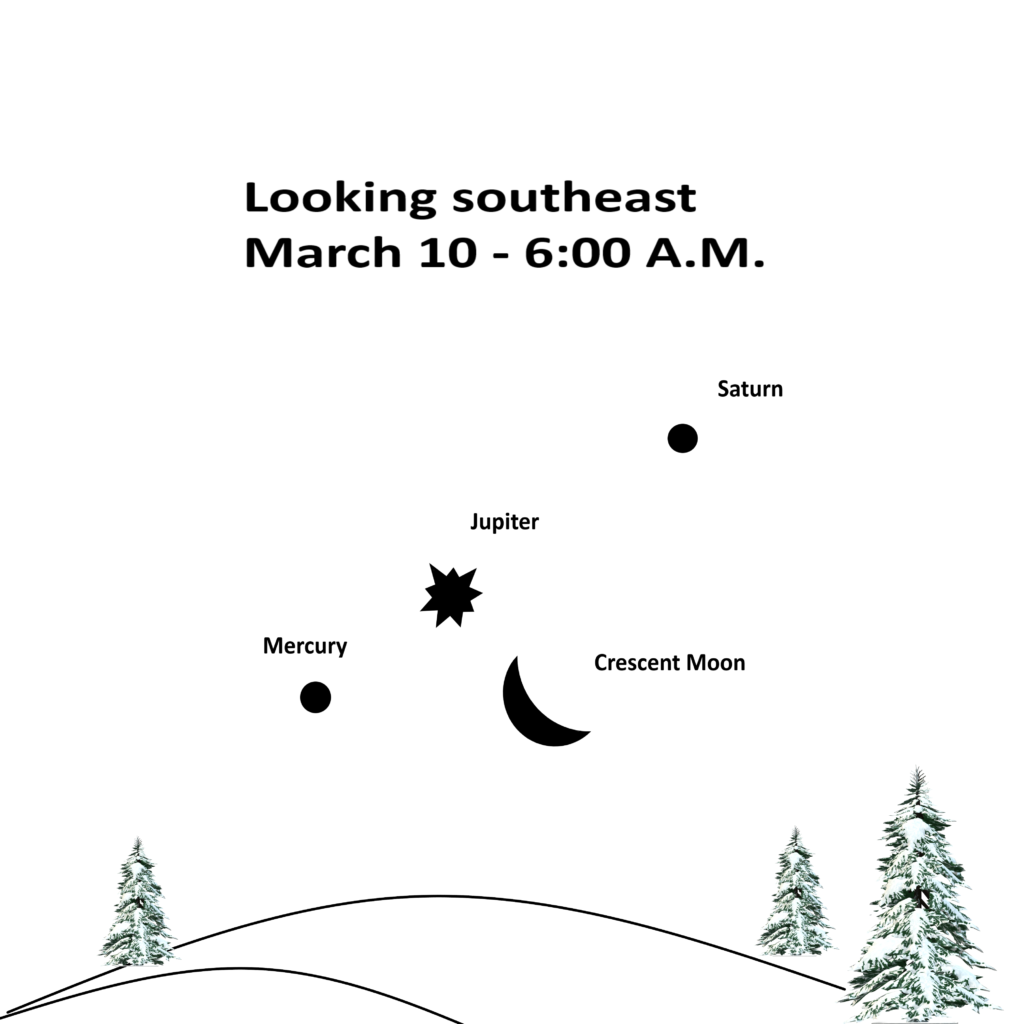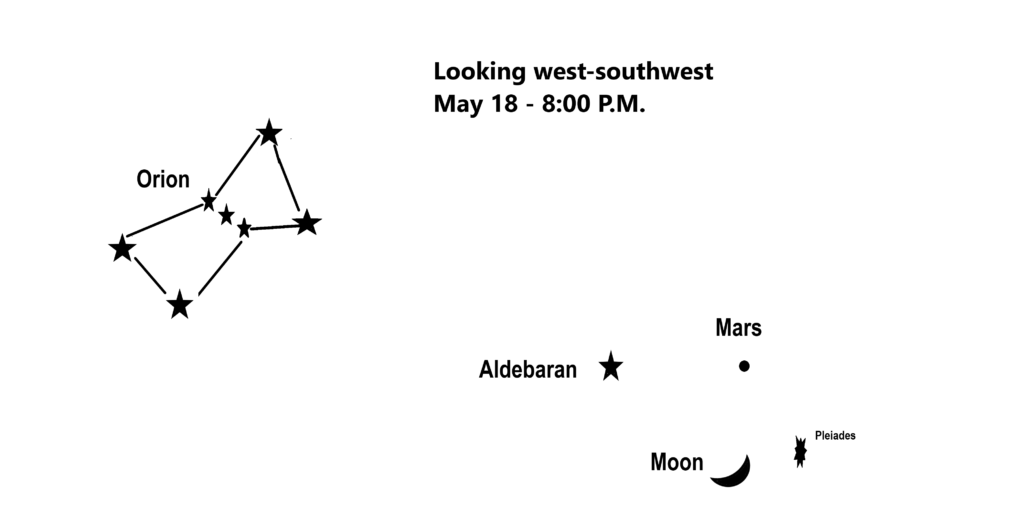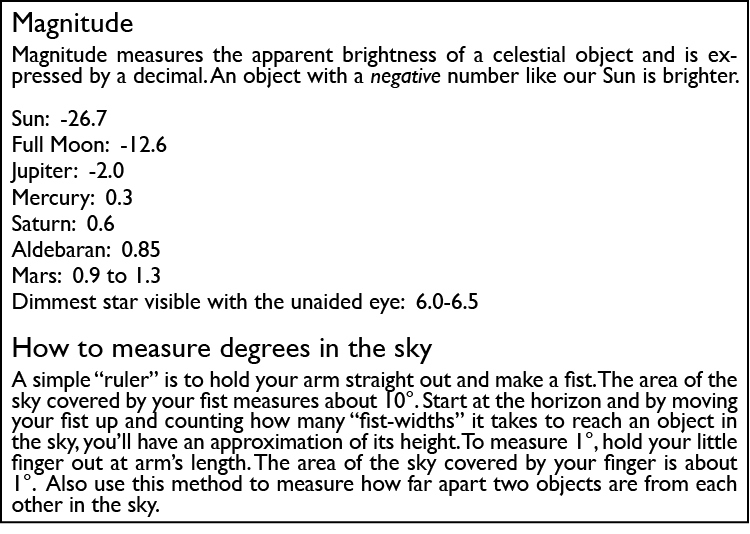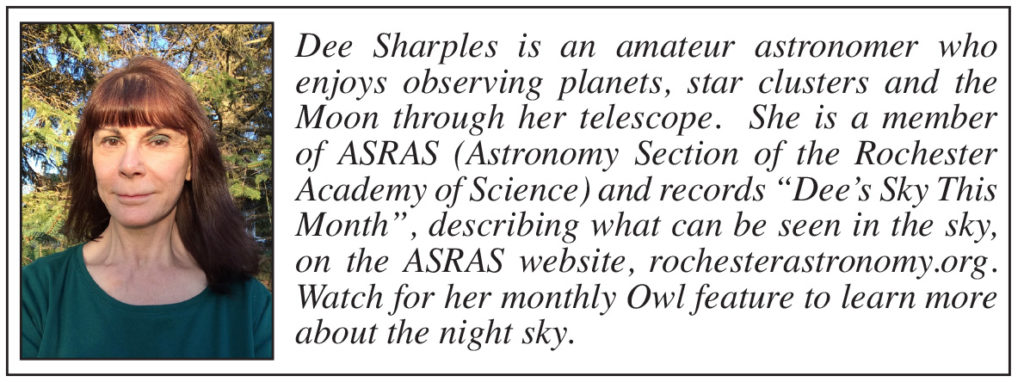The Night Sky: Early Morning Planet Viewing and Vernal Equinox in March
- DEE SHARPLES –
Warmer Temperatures Offer More Opportunities for Night Sky (and Early Morning) Viewing
If you’re a fan of spotting the planets in the evening sky, you’re going to need to move your observing schedule to the early morning hours.

Saturn and Jupiter, two bright planets that have been a constant in our evening sky for several months, have now become early morning celestial objects. Thirty minutes before sunrise on March 10th, they’ll be a highlight in the southeastern sky along with the planet Mercury and a thin crescent moon. Find an observing location free from obstacles like trees and houses, and look about 20 degrees (two fist-widths) up from the horizon. Saturn at magnitude 0.6 will be the dimmest of the three planets, followed by brighter Mercury at magnitude 0.3, and Jupiter, the brightest at magnitude -2.0. The crescent moon will be very slim and delicate but will add a pretty accent near the three star-like planets.
But one planet can still be found in the evening sky—Mars shining fairly brightly at magnitude 0.9 at the beginning of the month. It fades gradually to magnitude 1.3 as the month progresses but still retains its distinctly reddish hue which is caused by the oxidization of the iron found in the surface material on Mars.
Look for the planet in the west-southwest around 8:00 PM. If you’re familiar with the distinctive constellation Orion, it will help you to locate Mars. Notice the red giant star Aldebaran shining at magnitude 0.85 which lies just to the left of Mars. A beautiful star cluster called the Pleiades, or Seven Sisters, lies fairly close and to the right of Mars. With your naked eye, the Pleiades will look like a hazy group of stars, but binoculars will reveal its true beauty of several bright individual stars. On March 18, Mars and the Pleiades will be joined by a crescent moon which will be five degrees from the Pleiades, with Mars eight degrees to the northeast.
Daylight Savings Time begins on March 14th this year. The sun is higher in the sky each day and we can feel its warmth. However, we’ll have to wait an extra hour for the sky to darken in the evening before being able to observe. But since the sun will rise an hour later, you can observe that beautiful gathering of planets at a later time in the morning.
The vernal equinox, signaling the first official day of spring, occurs on March 20th at 5:37 A.M. We can now look forward to the warmer days of spring as the northern hemisphere continues to tip more and more toward the sun.


